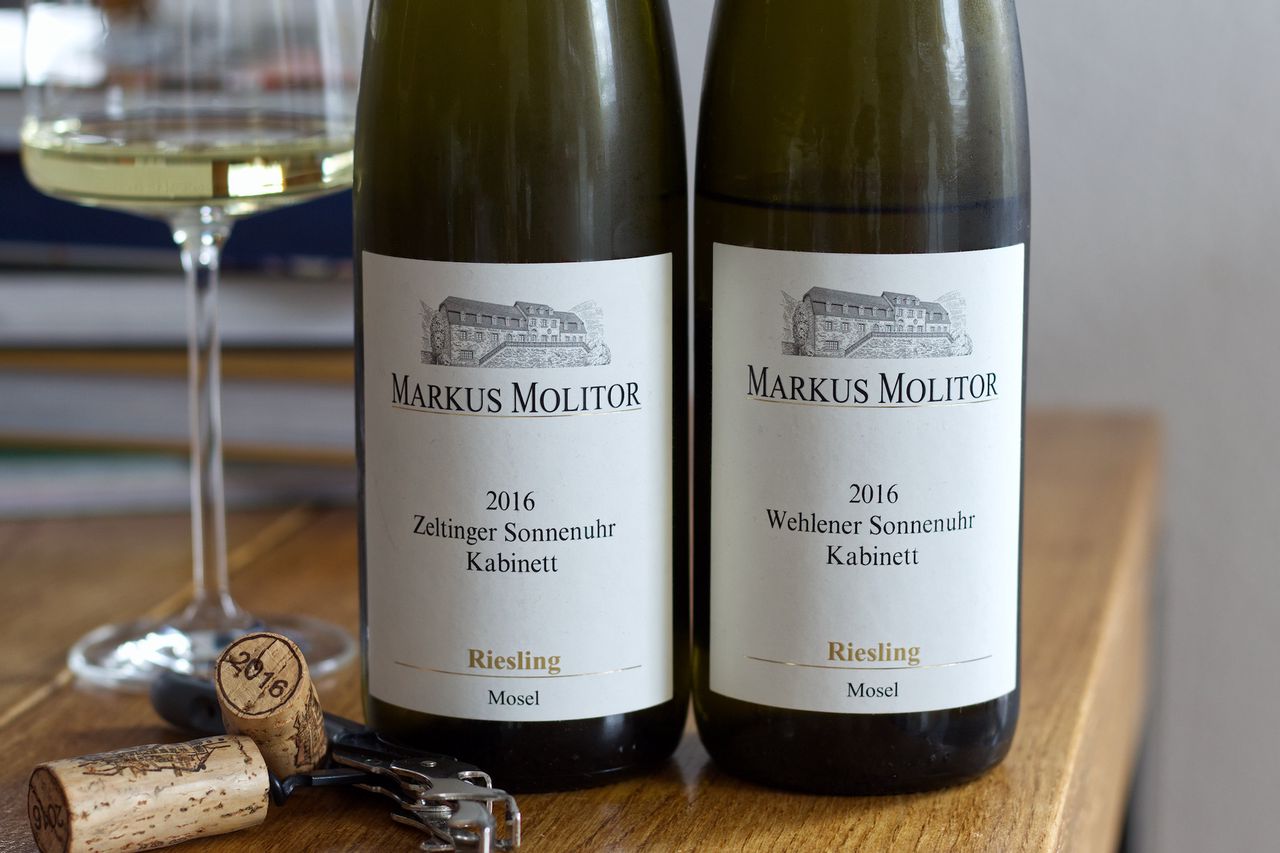Two Bottles Markus Molitor
We drink two bottles of Kabinett from the Moselle: the Zeltinger Sonnenuhr from Markus Molitor and the Wehlener Sonnenuhr from 2016.

January remains alcohol-free or at least alcohol-reduced. With this in mind, we have two Riesling Kabinett from the Moselle in our glasses with around 8 percent alcohol, before we go completely alcohol-free again next week. The two wines from Markus Molitor were harvested in 2016 in two well-known vineyards on the Mosel: One wine comes from the Wehlener Sonnenuhr and the other from the Zeltinger Sonnenuhr. It is often the case on the Moselle that, due to the meanders of the river, the sites can differ greatly in their orientation. But this is not the case with these two sites, as they lie exactly next to each other without the river turning. Nevertheless, the soils and the microclimate differ naturally. Both vineyards are certainly spectacular to look at and we hope to stand in front of or in them again soon with a glass of Riesling in our hands. When it comes from Markus Molitor, you first have to make an important decision: Which one do you want? More than 80 different wines are pressed each year. That is enormous. A wide selection of top vineyards from the Moselle and the Saar and an equally wide selection of Prädikat wines, sweet, off-dry and dry, recognisable by the colour of the capsules. Today, the capsules are golden and thus the wines are fruity-sweet.
We start in Wehlen. Right from the first moment, it smells like you would imagine Kabi to smell. Citrus fruit, yellow fruit, mango, a little honey. On the tongue, a crisp acidity and more minerality than the nose announced and again the honey. Nice length and super fresh. The fact that this is 2016, and that was a little while ago now, is not noticeable here. Air makes the wine leaner, more elegant and much finer. The fruit becomes lighter and lighter, more floral, softer and softer. First there is a bit of blossom honey on the tongue, then the stone settles on the outside and the acidity pulls at the edges of the tongue and at the back of the palate. And when all that is gone, the yellow fruit remains. Great!
After a night in the fridge, the acidity has become more present but also riper. Like a very ripe pineapple. The fruit becomes more exotic and also riper. Perhaps a sign of time in the bottle after all. But the Wehlener Sonnenuhr is just as much fun as on the first evening.
We continue in Zeltingen. And yes, there are clear differences. The wine has much more contour than the Wehlener Sonnenuhr. More herbal, more grapefruit and also much more minerality already in the nose. In the mouth, it seems more sparse, more straightforward, with even more stone and less fruit. It also has much less exoticism and goes more in the direction of pears or perhaps apricots. With air, iodine comes into the nose, smells a bit like Betaisadonna ointment mixed with apples, I hear from opposite the table. And she is right. Zeltingen is more pithy, herbaceously mineral and much more clearly structured.
And it also digests the night in the fridge quite differently than its counterpart. It tends to close up, becomes even more herbaceous. The iodine is still there a little, but has already receded considerably. Towards the end of the evening, it disappears completely, leaving behind a totally focused minerality, light fruit and great depth. Quite different, but not a bit less beautiful than Wehlen.
However, Wehlen goes much better with our usual Kabi food pairing, Asian-inspired and spicy. The exotic fruit and honey give the food something that the Zeltinger Sonnenuhr does not offer. It fits, too, but somehow you give away a lot of potential that fully shows when drunk on its own after the meal.
Related Posts
- Carl Loewen - Maximin Herrenberg 2018
- Two Bottles Riesling by Weiser-Künstler
- Two Bottles Martin Müllen